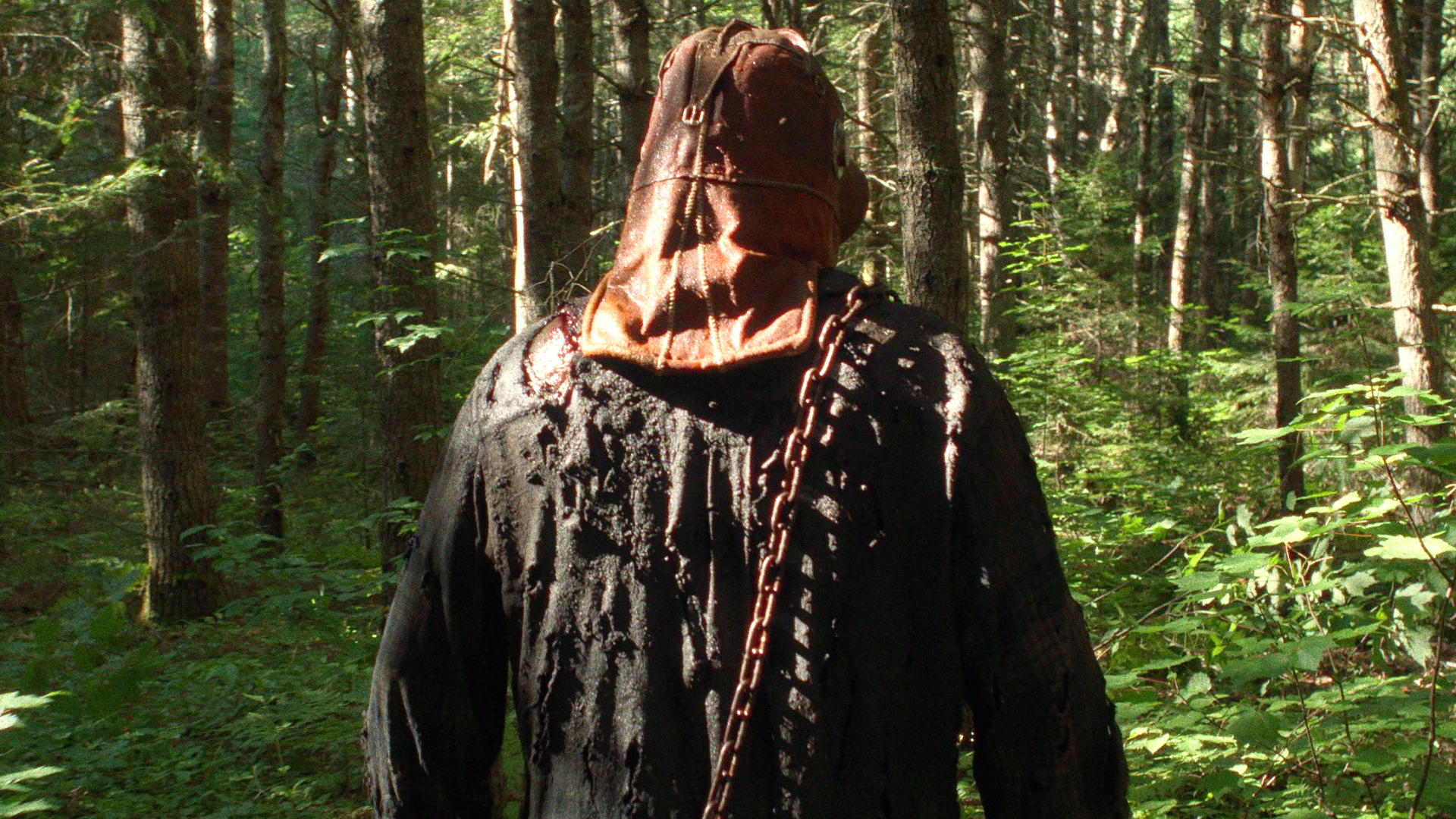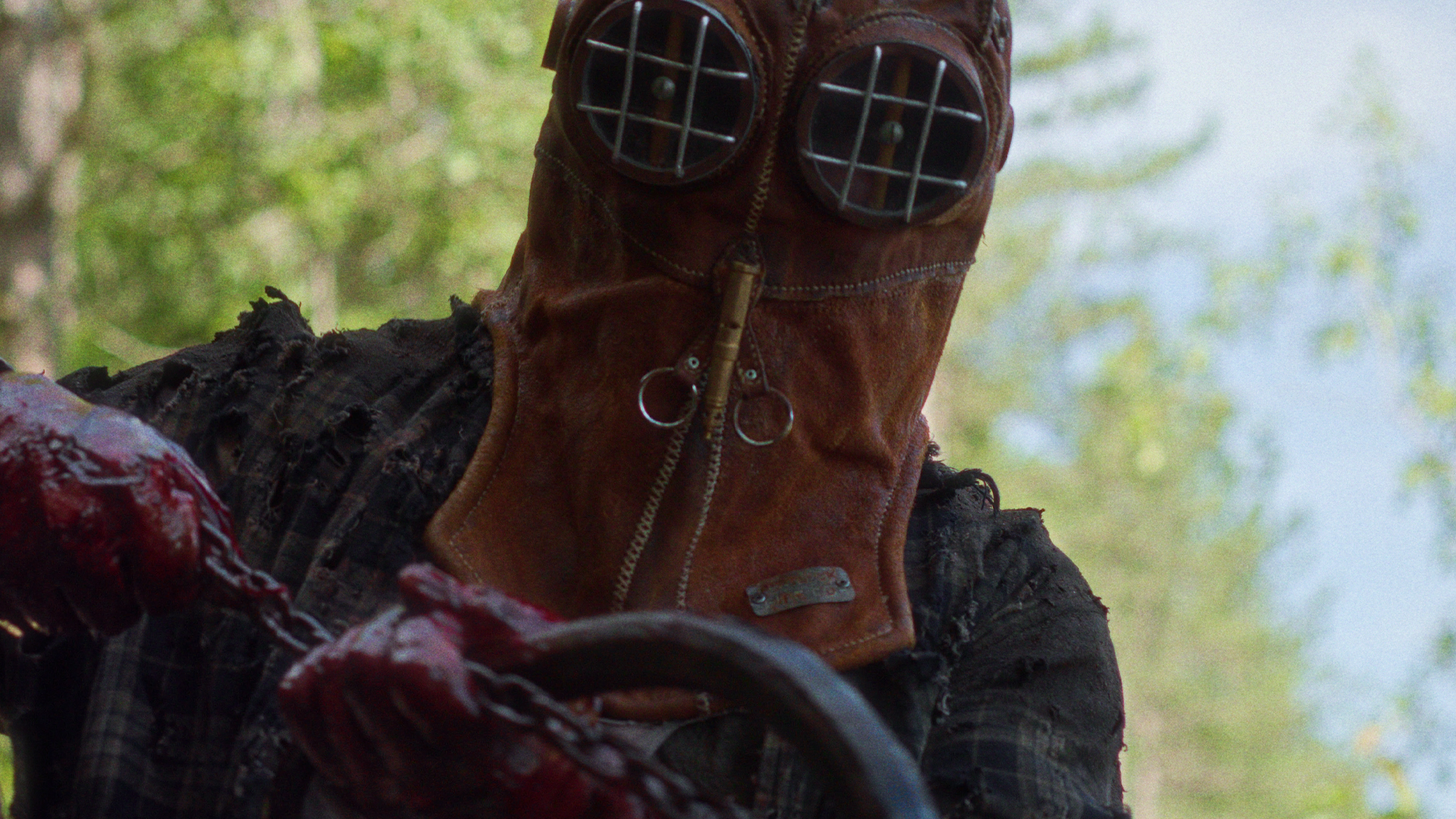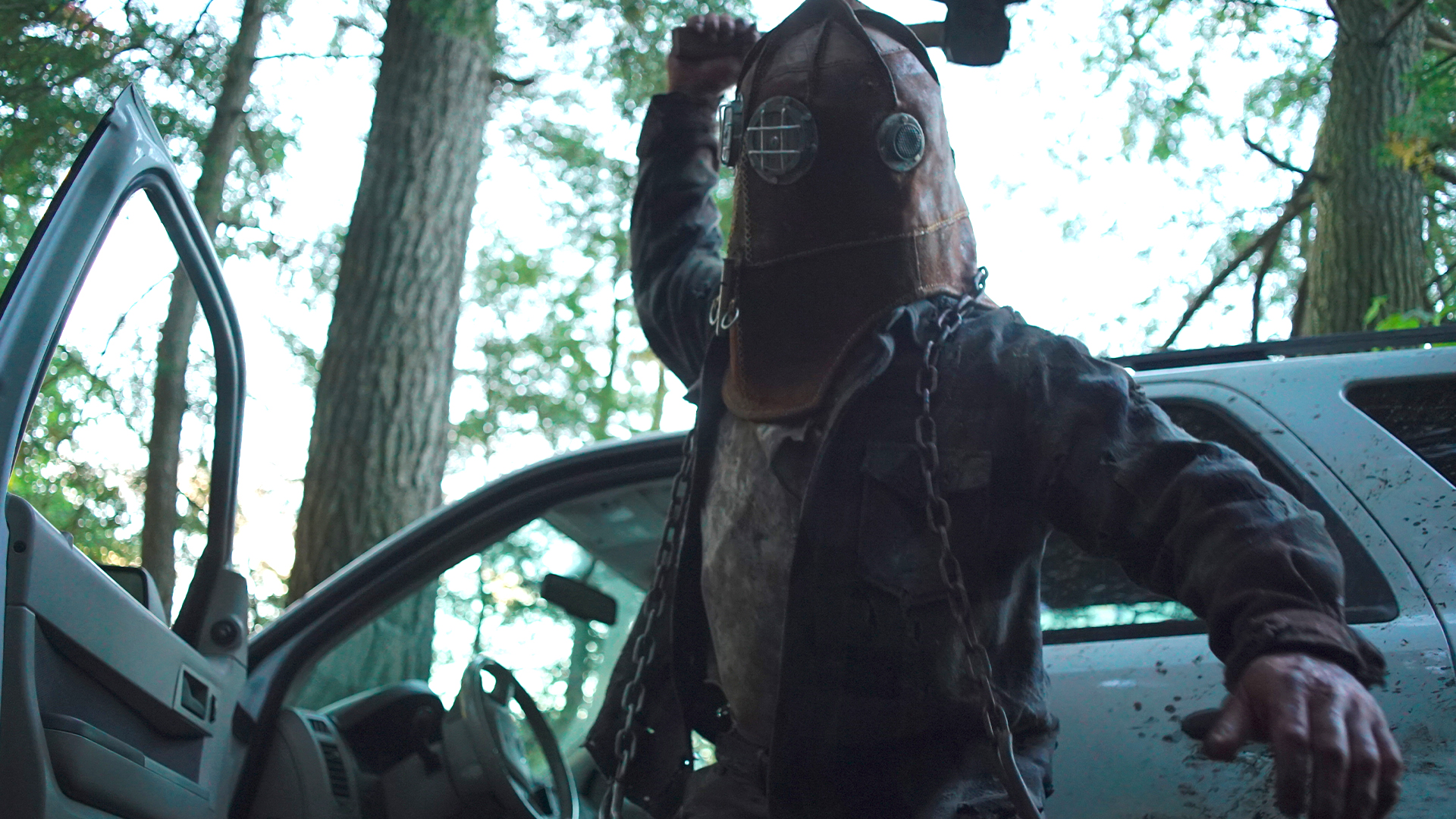In a Violent Nature attempts to subvert slasher horrors from the inside

A reanimated butcher is on a killing spree in slasher-horror-with-a-difference In a Violent Nature. It’s fascinating as a genre experiment, says Rory Doherty.
A woodland curse. A local legend waking from a subterranean tomb. A band of clueless, helpless students falling victim to his supernatural grip and rusty tools. In a Violent Nature plays the beats of the “killer in the woods” slasher almost in the background, as writer-director Chris Nash’s camera lingers as close as possible to our gnarly, reanimated butcher Johnny (Ry Barrett), not quite adopting his perspective, but asking us to imagine what it would even look like. It’s not a fully realised deconstruction of slasher films, but it is an effective and electric subversion of them, repositioning the barbaric killer’s violence and voyeurism as something inevitable, absurd, and sometimes melancholy.
There are many reasons why they don’t make slashers like they used to. The glut of Hollywood films about gimmicky villains cutting down a gaggle of teens one by one from the late 70s and early 80s had an in-built short shelf life; the fad would soon tire moviegoers, and seeing as these films were, by design, not too imaginative, the garden variety “killer in the woods” slasher, such as The Burning, Sleepaway Camp, or the Friday the 13th series, self-terminated pretty quickly.
This does however mean that the genre has become encased in amber, instinctively associated with a simpler, cornier type of thrill-seeking, where characters slip into archetypal roles and the film admits it’s okay to think of young, innocent human beings as fodder for voyeuristic violence. As a type of entertainment, it is old-fashioned, one-note, and kind of iconic—despite the short window of its proliferation, it’s a relentlessly enduring format. A lot of people will picture a classic slasher when you ask them to think of a generic “scary movie”.
This cultural legacy has teed up slashers as the perfect candidates for postmodern reinterpretation. From Scream to Tucker and Dale vs Evil to The Cabin in the Woods to The Final Girls, the cartoonish simplicity of the slasher genre lends itself to deconstruction and pastiche. To best enjoy these films, you might benefit from having seen a few slashers already, but maybe more importantly, you need to be able to recognise how they work.
That’s what makes In a Violent Nature so fascinating as a genre experiment—by maintaining the camera behind Johnny as he plods through the foliage for so long, Nash attempts to deconstruct slashers from the inside, imagining the faceless stock killer as an entity with impulse, imagination, and less control over his actions than we usually think. It means the film is less overtly comedic than other slasher parodies (although it’s still pretty funny), and much more likely to irritate people who were promised pure, gruesome kills, but it means Nash can build a half-unnerving, half-tranquil atmosphere, explore careful and striking shot composition, and let us figure out how we’re supposed to feel about Johnny ourselves.
After a golden necklace is pilfered from his grave, Johnny emerges to stalk the ignorant, young cohort disturbing his resting place by, um, having a pleasant weekend away in a rural Canadian cabin. Even though their initial bouts of dialogue feel like 1980 slasher lore dumped in a 2000s mumblecore drama (a park ranger, played by Reece Presley, later indicates that we may be deep into a Johnny slasher series), the modernness of the group becomes abundantly clear. Cell phones, threats of cancellation, and queer flirtation all signal that the brunt of Classic Slasher-isms may be behind us, and Johnny represents a forgotten cultural entity raised from the dead.

And yet, still the characters who are vulgar or promiscuous get killed first, and in particularly brutal fashion; it’s not clear if this genre beat is regurgitated in order to undermine its mean-spiritedness or if the film felt obliged to deliver on our genre expectations. At some points, In a Violent Nature overplays its sincere dedication to slasher plotting—the backstory to Johnny’s necklace appears in a jarring superimposed flashback when so much else in the film is left to our imagination. But Nash can also be heavy-handed with his subversions—when Johnny plays with a toy car on a set of keys he finds, he takes off his mask to reveal a decomposed ogre-like face that insists upon audience sympathy in too direct a fashion.
But most of the film’s thematic details compel, like how many of Johnny’s victims go impossibly numb and inert as he submits them to horrendous violence, or that the slasher imperative that the killer is invulnerable gives Johnny’s long pursuits a calm, sometimes serene momentum deeply at odds with the violence he inflicts.

In its closing stretch, In a Violent Nature elevates itself from curious experiment to something folkish and unnerving. Nash switches perspective to Kris (Andrea Pavlovic), the film’s “final girl”, and immerses us in a gentle conversation about Johnny’s existence as a local faded memory—complete with a spurt of anxiety about his gaze following us no matter where we tread. It ends the film on a note of sensitive, sensory finality, even if some prior attempts at genre excavation were half-measured. Nash may not have mastered the postmodern slasher, but out of nasty fabric he has created something strange, lonely, and—dare we say it—briefly beautiful.



















